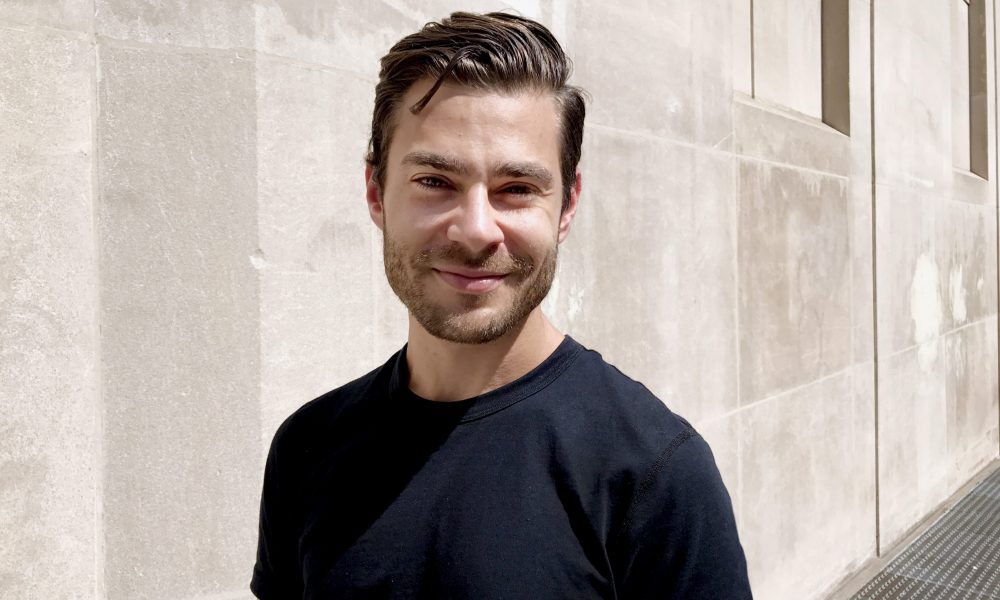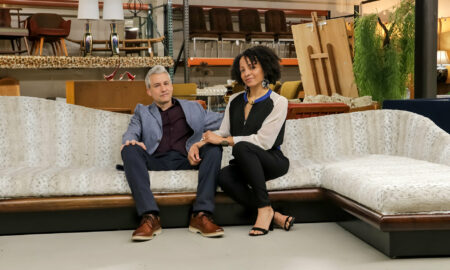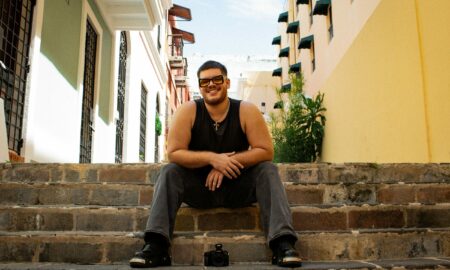

Today we’d like to introduce you to Matthew A. Finn.
So, before we jump into specific questions about the business, why don’t you give us some details about you and your story.
My name is Matt Finn, I’m an architect and Founder of Cognitive Design, a consulting and design firm specialized in human health and wellbeing. Think about how a place affects your ability to focus, relax, etc. That’s what we do.
Ever since I was a little kid I’ve enjoyed making things or creating things. I really enjoyed playing with LEGOs growing up, and that part of my personality led me to study architecture at Southern Poly (which is now part of Kennesaw State University). After I graduated, I landed a job at Perkins+Will; I was there for about 10 years and learn a lot about design and the profession. I worked with a lot of strong designers on several buildings that I am really proud to have been a part of.
Now I have my own firm and work with a network of collaborators (many outside of the design profession) to make architecture and study complex topics like how architecture can facilitate therapy for veterans with PTSD, reduce childhood obesity, or encourage healthy living for low-income seniors. The collaborative approach allows Cognitive Design to tackle problems too complex to be solved by a single profession.
Great, so let’s dig a little deeper into the story – has it been an easy path overall and if not, what were the challenges you’ve had to overcome?
To become an architect, you have to go to college, intern, and then pass a series of licensure exams – the exams were the most miserable part for me. There were 7 when I took them and somewhere along the way I stopped and really asked myself why I was doing this!
I love being an architect because I believe in the power of design to impact people’s lives in meaningful ways. This led me to a very simple, but challenging, question: How does design affect people?
I started looking into this and quickly realized I was in uncharted territory. So, I chose a case study starting point and began tackling this enormously complex topic by looking into how design could help veterans with Posttraumatic Stress Disorder (PTSD).
To do this research, I partnered with Clint McMahan and Edward Vega, Ph.D. I collaborated with many others, but these were the main two. Clint is a Marine Corps veteran and Edward is a clinical psychologist and Director of the Trauma Recovery Program at the Atlanta Department of Veterans Affairs, I really enjoyed working with these guys.
Aside from simply enjoying our conversations, they were outside the design profession and after several years working almost exclusively with other designers, I understood the significance of what they were contributing. We were all clearly aligned with our objective, but approaching the work from completely different backgrounds and insights. I thought the whole process was fascinating and very rewarding. As a simple example of something that came out of that work, here’s an article that explains how certain types of flooring can be problematic for a veteran with PTSD.
While this led to some speaking engagements and a couple of other opportunities, it became obvious that this type of work didn’t fit squarely within the business model of a standard architectural firm. So, in 2016 I left and pursued Cognitive Design full time.
As an industry, the last 20 years produced tremendous growth in knowledge about how architecture and construction affect the earth, which was great. I believe the next several decades we’ll all be learning about how the built environment affects people.
We’re still in the beginning of both a shift in the profession and of Cognitive Design as a business, but I’m happy with how things are going so far. I get to do a lot more of this type of work as consulting, like the work we did for Mercy Housing’s Senior Facilities, but also by incorporating a streamlined version of this approach into our standard architectural design process, like in the work we’re doing for Constellations.
Please tell us about Cognitive Design.
“Cognitive” can have multiple meanings, but the one I used when naming my firm is “of- or pertaining to- the act of perception.” “Cognitive Design” therefore has two meanings. It says “design should consider an individual’s perception” and recognizes “design affects how people perceive objects and experiences that are within the built environment.”
We make it a point to learn about the users of a space and consider how their individual life’s experiences affect how they perceive and react to the built environment around them, which is what we get hired to design. We acknowledge that this can be complicated and in addition to great aesthetic design, we have a process that ensures our designs are as thoughtful as possible. We specialize in this qualitative aspect of design, not a specific building type or size.
For example, in a residential bathroom (images below), we support circadian function by flooding the entire space with diffused daylight – avoiding glare and unflattering shadows, designed a custom makeup cabinet for discrete and convenient storage, and provided ample air supply with hidden diffusers throughout the entire space. These are all examples of how we responded to our clients’ needs for a restorative cleansing space without compromising any of the comfort and amenities of modern life.
At the other end of the spectrum for us, we just started working on a 10-acre master plan for Highlands Community Church in Dallas, GA. We’re assembling a Design Advisory Board for this project which already includes a real estate developer and public health researcher. We’ll add to this group as we identify specific goals and opportunities for the project.
I’m proud of our work and that we can do it in a way that isn’t financially burdensome. In the end, it’s a better value for our clients.
Do you look back particularly fondly on any memories from childhood?
Fun question, thanks for asking! I’m an architect, so it probably comes as no surprise that I loved playing with LEGOs growing up. I remember shaking every gift I received hoping for that unmistakable sound of plastic bricks rattling around inside, haha! I usually built the kit once and then quickly took it apart and put all pieces in a huge plastic bin I had, it was filled with thousands of LEGOs. Free-building with the LEGOs in that bin is what I remember most.
Pricing:
As I’m sure you’ve gathered by now, we think where you spend your time matters – and there’s no Ctrl+Z in construction! If you’re planning to build or renovate and would like to talk with us about how we can help, send an email to hello@cognitive.design and we’ll get back with you quickly.
We have a lot of respect for the significance of the architect/client relationship and structure our work accordingly. For architectural projects we start with a small amount of work, like documenting an existing building before a renovation and setting goals for design, before contracting for full architectural services. It takes a lot of the pressure off of clients concerned with choosing the best architect for their project. We typically roll into design right after the early work. By the time we get hired for design our clients are just as excited about the people they’ll be working with as they are about the goals they set! Because every project is different we don’t have standard pricing, but we can usually keep the initial work under $3,000.
Our consulting and research projects happen in a similar way; we start by working with our clients (who are typically experts themselves) to identify problems and objectives related to the built environment. Once this is defined we get started on approaching the problem in a systematic way that moves us toward solutions.
We can only imagine who we’ll get to work with next, so we’re always looking for people to join our Network of Collaborators. We collaborate with doctors and nurses, user interface designers and data analysts, psychologists and psychopaths… just kidding about the last one, thanks for reading this entire interview! If you’d like to be a part of the work we do, please send an email with your interests and thoughts about collaborating to join@cognitive.design.
Contact Info:
- Website: cognitive.design
- Email: hello@cognitive.design








Image Credit:
Michelle Consuegra www.michelleconsuegra.com
Getting in touch: VoyageATL is built on recommendations from the community; it’s how we uncover hidden gems, so if you know someone who deserves recognition please let us know here.



















